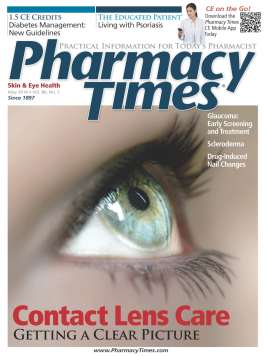Publication
Article
Pharmacy Times
Continuous Improvement Needed for Prescribing Systems
Author(s):
A review of 2 examples of new failure modes that may be introduced by poorly designed or implemented technology reported to the Institute for Safe Medication Practices.

Over the years, the Institute for Safe Medication Practices (ISMP) has received several reports expressing concern about new failure modes that may be introduced by poorly designed or implemented technology. This includes vulnerabilities introduced into the medication use system by computerized prescribing systems, including electronic prescribing (e-prescribing) applications. Below are 2 examples of system weaknesses reported to the ISMP Medication Errors Reporting Program (MERP).
Drug Name Fields on Prescription
A patient brought a new computer-generated prescription (Figure 1) to the community pharmacy. The pharmacy technician processed the prescription as oxyCODONE 30 mg tablets, failing to notice that “OXYCONTIN” was printed immediately below. The pharmacist also missed the indication for OxyCONTIN, so he verified and then dispensed oxyCODONE. The fact that the presentation of the generic name oxyCODONE did not include the modifier “extended release” likely contributed to the technician and the pharmacist interpreting the prescription as oxyCODONE rather than OxyCONTIN (oxyCODONE extended release).
After several days, the customer called the pharmacy because the tablets appeared to be different from what he had received in the past. A different pharmacist reviewed the original prescription and discovered that the patient should have received OxyCONTIN 30 mg. The pharmacist contacted the physician to discuss the error and how the presentation of the drug names on the computer-generated prescription contributed to the error.
E-prescribing and electronic health record (EHR) vendors must evaluate their systems and ensure that they display appropriate drug names in a clear and understandable manner (eg, OxyCONTIN [oxyCODONE extended release]) to reduce the risk of medication errors. Prescribers should examine how prescriptions appear on their computer screen and on faxed, printed, or electronically transmitted prescriptions when they evaluate vendor systems. Pharmacy staff must review the entire prescription for discrepancies.
Duplicate Copies of Electronic Prescriptions
Duplicate and even triplicate copies of electronic prescriptions (e-Rxs) can be transmitted for a number of different reasons, including system interruptions during transmission of an e-Rx. In 1 example, 3 copies of prescriptions for refills of a patient’s long-term medications were transmitted to a pharmacy, along with a new prescription for an antibiotic. After dispensing the 2 requested refills, the pharmacist was deleting the duplicate copies of the e-Rxs only to find the prescription for the new antibiotic. The pharmacist called the patient to ask him to return to the pharmacy to pick up the antibiotic.
When e-Rxs are duplicated, a pharmacist must spend time going through each one to make sure they are actually duplicates rather than an updated prescription indicating a change in therapy. The fact that many prescribers seem unable to use their e-prescribing system to recall or discontinue an e-Rx once it has been sent contributes to this problem. The time spent on these activities means there is less time for the pharmacist to thoroughly review other prescriptions or to speak with patients. Also, the increased electronic clutter and “noise” can make it easier to miss important therapy changes when they are transmitted.
Safe Practice Recommendations
Please be sure to report technology-related errors to the ISMP MERP at www.ismp.org/merp. Whenever possible, please determine the technology vendor to include in your report. ISMP will notify others and advocate for standards that include incorporating safety into e-prescribing and EHR systems.
Of course, in both of the examples above, the errors might have been caught if the pharmacy staff had opened the bag with the patient at the point of sale and reviewed the prescription vials (and the medications they contain) to verify what was ordered and expected.
Dr. Gaunt is a medication safety analyst and the editor of ISMP Medication Safety Alert! Community/Ambulatory Care Edition.







